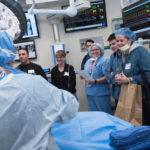Gracie’s complex spine
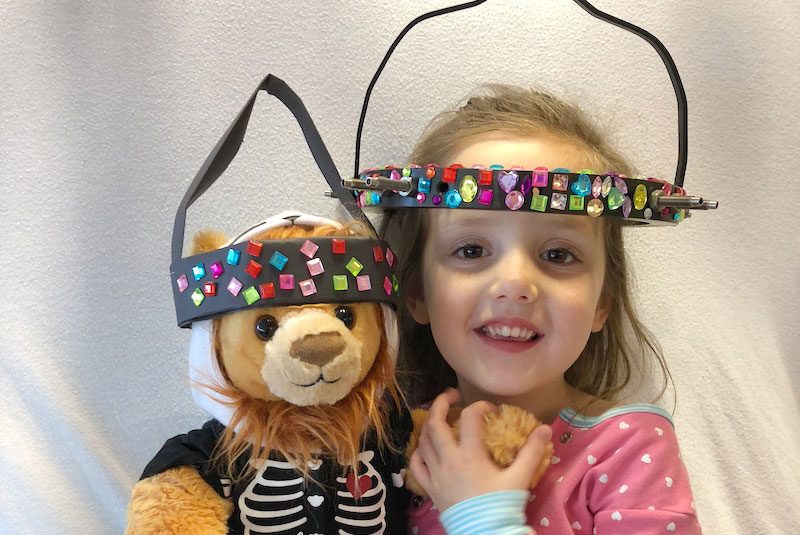
Halloween 2018 was no ordinary ghouls’ day for Gracie Neef. She and both her parents dressed up as the witches from “Hocus Pocus.” To Gracie’s delight, her father’s costume included a long, blonde wig. Even more unusual, Gracie was an inpatient at Boston Children’s Hospital. “The fact that Gracie was going to spend Halloween in the hospital was at first really sad,” says Gracie’s mother, Lucie Brennan. “But we went trick or treating all around the hospital. It was surprisingly fun.” Two weeks later, Gracie had spinal fusion surgery.
For years, Lucie and her husband, James, knew Gracie would need spinal fusion surgery someday. When she was 18 months old, Dr. Edward Smith, pediatric neurosurgeon at Boston Children’s, removed a fast-growing tumor, called an ependymoma, from her brain and spine. The surgery and the radiation treatment that followed were successful; Gracie has been cancer-free for four years and counting. However, the extensive surgery weakened Gracie’s cervical spine.
The long road of stabilizing Gracie’s spine
Gracie had cervical kyphosis, an exaggerated forward curvature of the upper spine. Though many children with cervical kyphosis do not require surgery, in severe cases like Gracie’s, the spine slowly collapses forward until the vertebrae impinge on the spinal cord.
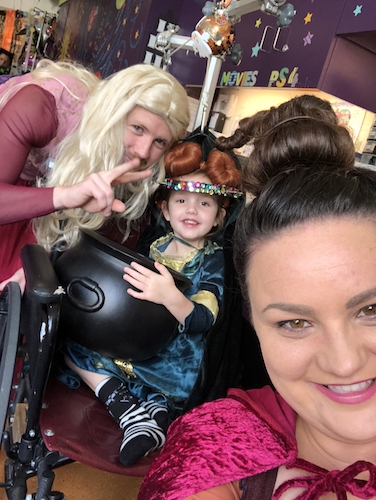
The family met orthopedic surgeon Dr. Daniel Hedequist of the Complex Cervical Spine Program for the first time just before Gracie started a six-week course of radiation. “Dr. Hedequist was very honest with us,” recalls Lucie. “He explained Gracie’s kyphosis and his recommendations for treatment.”
To stabilize Gracie’s spine, Dr. Hedequist would fuse several of her vertebrae. The spinal fusion surgery would reverse the kyphosis but the fused vertebrae would no longer bend or twist and that section of her spine would stop growing. Because of this, Dr. Hedequist wanted to postpone surgery for as long as possible. “Ideally, he wanted to wait until Gracie was at least 8 years old and give her body a chance to grow,” says Lucie.
At first, Gracie wore a noninvasive halo brace that held her head in one position while her neck and spine developed. Eventually, the muscles around her spine grew stronger and she no longer needed the halo. By the time she started preschool, Gracie was wearing a supportive collar. In time, she grew strong enough to stop wearing the collar. “It was wonderful for her to just be free and normal for a while,” says her mother.
Signs of advancing kyphosis
After their first meeting with Dr. Hedequist, Gracie and her parents returned to Boston Children’s regularly for follow-up visits. When she was five, an x-ray revealed that the cervical kyphosis had worsened and several of her vertebrae had started to pinch her spinal cord. After reviewing an MRI of Gracie’s spine, Drs. Hedequist and Smith confirmed that she needed spinal surgery sooner rather than later.
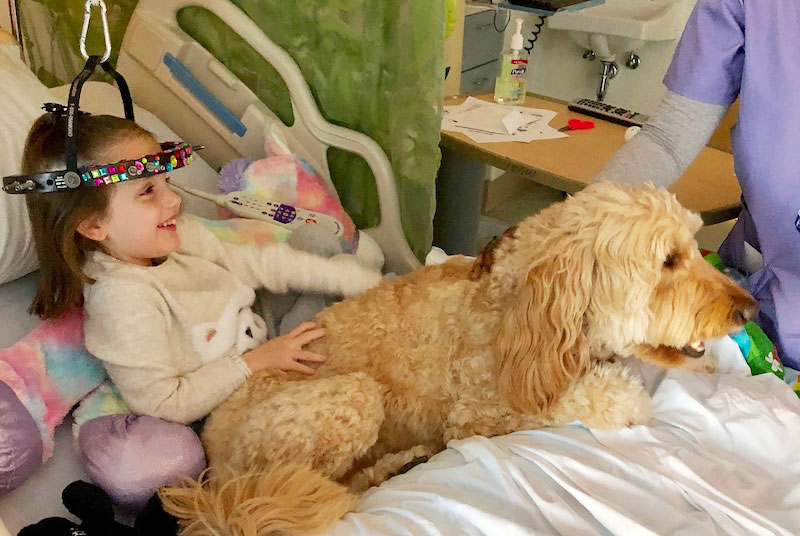
Lucie and James had mixed feelings about this news. “Things were honestly getting scary for us,” says Lucie. “Every time Gracie had a bump or a fall, we worried that she would wind up seriously injured. In a way, it would be a relief once she had the surgery. But Gracie was doing so well in so many ways and we knew she was facing a long, difficult recovery.”
Lucie and James decided to tell Gracie about the surgery two weeks before the first stage of the procedure. By the end of the conversation, Gracie understood that her spine was curved and Dr. Hedequist was going to fix it. In the give and take of the conversation, Lucie and James agreed that once Gracie got out of the hospital, she could adopt a puppy. “She has been obsessed with wanting a dog for a long time,” says Lucie. “We agreed that once this was all over, she would get a puppy. It gave her something to look forward to.”
Four weeks and five days at Boston Children’s
The procedure to correct Gracie’s cervical kyphosis involved two surgeries and four weeks in halo-gravity traction. For the first surgery, Dr. Hedequist attached a surgical halo to Gracie’s skull. After that, Gracie spent the next four weeks in traction at Boston Children’s. At the end of those four weeks, Drs. Hedequist and Smith would perform spinal fusion surgery in the front and back of her cervical spine, using instrumentation that would fuse several vertebrae.
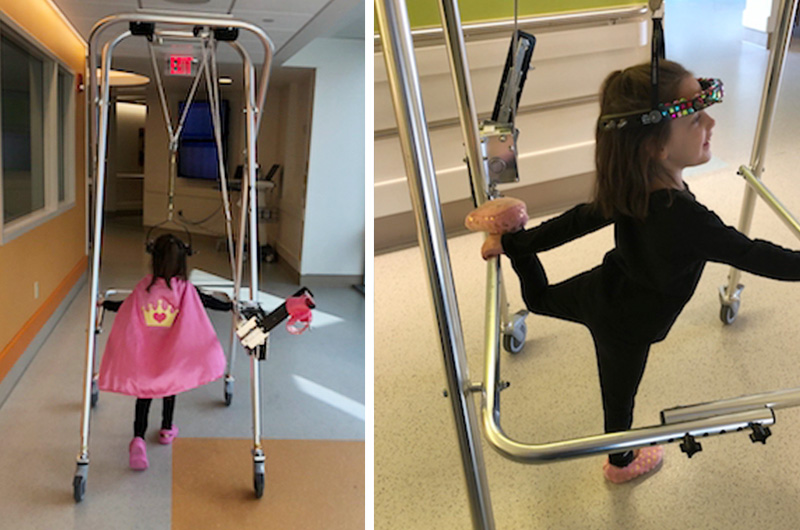
To everyone’s surprise, Gracie made the most of her inpatient stay at the hospital. In addition to a special bed and wheelchair, she had a special walker that allowed her to wheel herself to her favorite places, like the activity room, while the traction slowly lengthened her neck. “She became rather famous for racing around the halls of the orthopedic unit with her walker,” says Lucie. Meanwhile, the family took advantage of the array of services at Boston Children’s. Gracie particularly enjoyed visits from the Pawprints therapy dogs. “She told everyone she met that she was getting a puppy and was going to name her Rosie.”
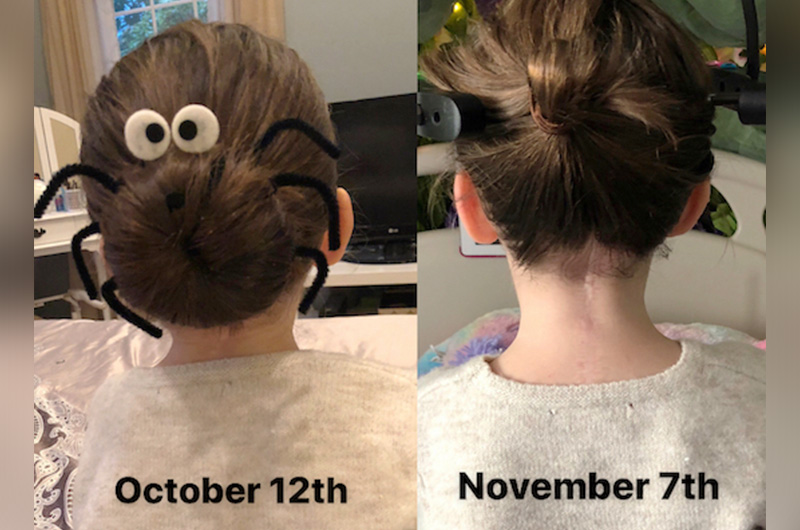
The weeks in traction had a visible impact on Gracie’s cervical spine. “In photos and x-rays, you could see that things were getting better. Her neck was getting visibly longer,” says Lucie. “What amazed me was how comfortable she was. I’d been so terrified about the surgery and the traction. It was really nothing like what I’d imagined.”
Gracie and Rosie together at last
Gracie remained in the hospital for five days after the spinal fusion surgery. When the time finally came to go home, she asked her parents if they could pick up Rosie that day. “We thought that was crazy,” says Lucie. “Who brings their child home from the hospital after major surgery and adopts a new puppy on the same day? But that’s what we did.”

Gracie had about an hour to get used to being home with a walker before Rosie arrived. As soon as the mini-poodle mix appeared, Gracie abandoned the device and walked over to greet her new friend. “After that there was no stopping her,” says Lucie.
Singing a happy song
In late January, Dr. Hedequist removed the halo and replaced it with an orthopedic vest. Gracie has returned to kindergarten and the friends who stayed in touch with her through Facetime during her long hospitalization. For now, she can’t participate in recess or gym, but she has been cleared to start physical therapy. Lucie notices physical and emotional improvements in her daughter almost every day. “I’ve seen a big difference in her since the surgery. She sings a lot more: Mary Poppins songs or songs she makes up. It’s so nice.”
With the spinal fusion surgery behind them and a furry new family member, Lucie is grateful to the caregivers who made the long procedure bearable for everyone. “It was like we were amongst family. They had our best interests at heart. I feel like they will do whatever they possibly can to give Gracie the best chance at having the best life.”
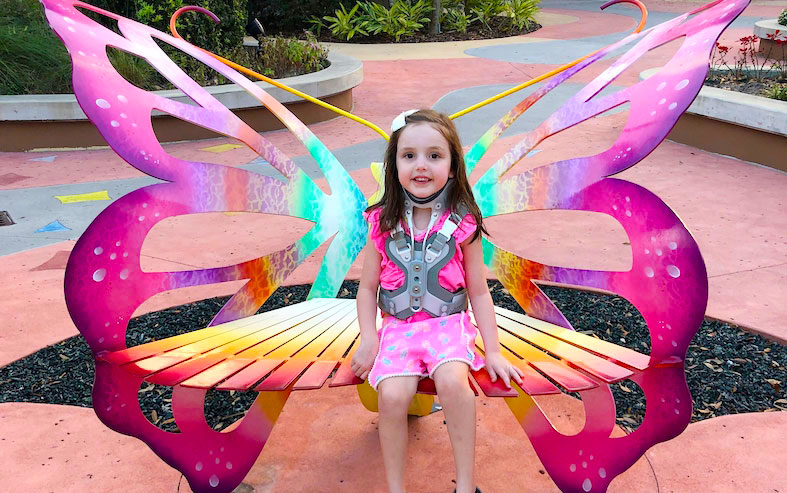
Learn more about the Complex Cervical Spine Program.
Related Posts :
-

Everli: Living her best life after atlantoaxial instability
When they travelled to the orphanage in China in early 2018, Shannon and Matt Gottschalk knew the toddler they hoped to ...
-

Saif looks ahead to life after spine surgery
Saif and his mother, Khawha Abbas, both had questions for Dr. Daniel Hedequist. For the past nine months, the family ...
-

Spinal fusion surgery during COVID-19
If things had gone according to plan, Jared Cohen would have had spinal fusion surgery during his April vacation. His ...
-

Scoliosis patients get a preview of spinal fusion surgery
“Patients are more at ease when they know what to expect,” says, Dr. Daniel Hedequist, chief of the Spine Division ...





